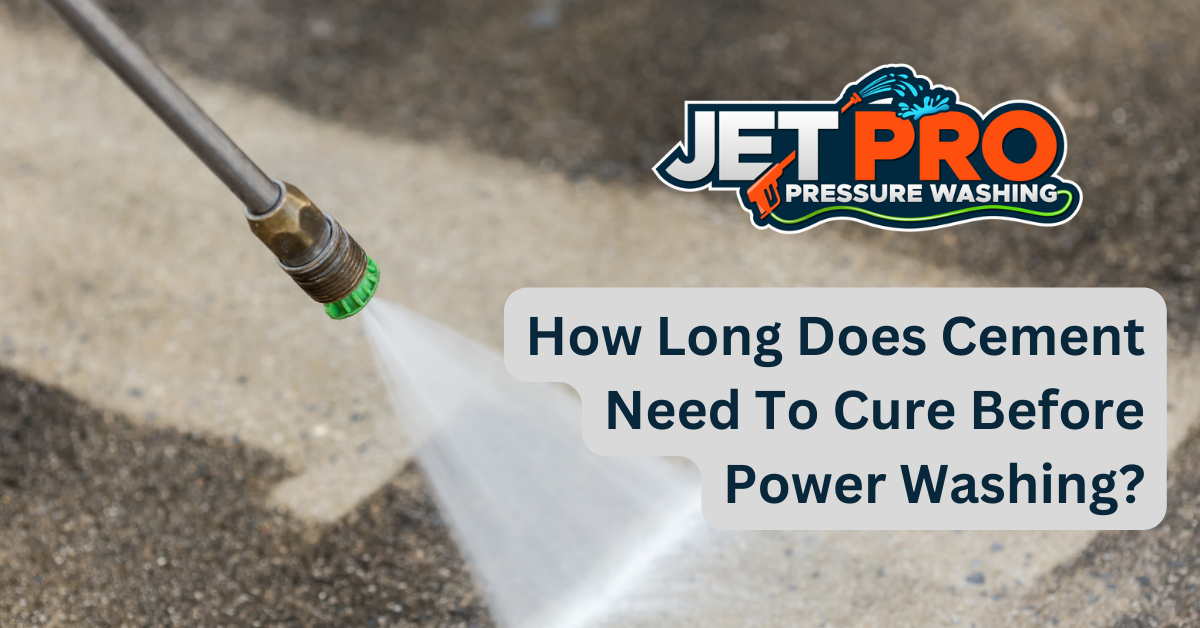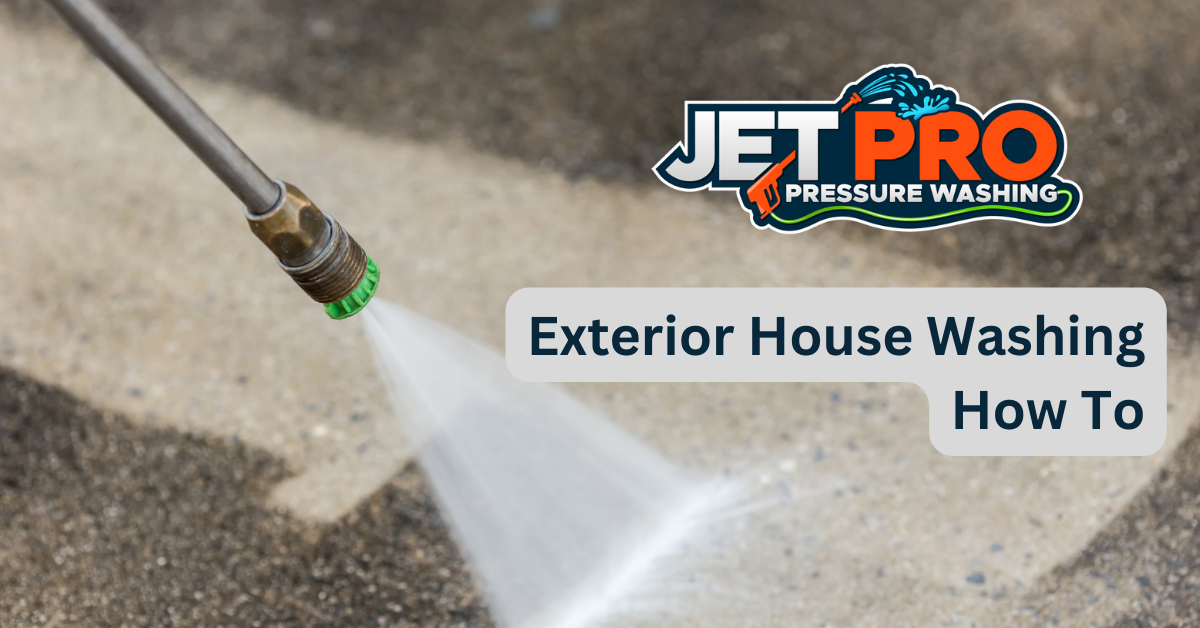Are you wondering how long cement should cure before power washing? Cement is a crucial construction material that requires a curing process to become strong and durable. If you’re unfamiliar with power washing, it’s a cleaning method that uses high-pressure water to remove dirt, grime, and stains from surfaces. Before hiring a power washing company to clean your cement, it’s essential to allow it to cure fully. In this article, we’ll explore the curing process, how long cement should cure, and the risks of power washing un-cured cement.
Additionally, we’ll provide tips on how to prepare cement for power washing, including links to resources on what power washing is and how to neutralize bleach after power washing. Lastly, we’ll discuss maintenance steps needed after power washing cement, including links to resources on window cleaning.
Overview of the Curing Process
Proper curing is essential for the successful application of power washing to a cement surface. Cement curing is the process of allowing the material to harden over time, which is dependent on several factors including the type of cement, the ambient temperature, and the humidity level. It is important that each of these factors are taken into consideration when determining the curing time of the cement. Curing times can range from a few hours to a few weeks, depending on the type of cement used.
Curing time for cement is affected by the ambient temperature and humidity. In cooler temperatures, the curing time will be extended, while in higher temperatures the curing process will be accelerated. Additionally, higher humidity levels can increase the curing time, while lower humidity can decrease the curing period. As such, it is important to keep these variables in mind when determining the curing time of the cement.
Power washing should not be attempted until the cement has completely cured. If power washing is attempted before the cement has fully cured, the cement could be damaged and the surface could be weakened. The amount of time that it takes for the cement to cure will vary depending on the type of cement used and the ambient conditions, so it is important to wait until the cement has fully cured before power washing.
How Long Does Cement Need to Cure?
Investigation of the curing time required for cement before power washing can evoke an emotional response in the audience. It is a process that requires much patience and consideration.
Depending on the climate, the type of cement used, and the conditions of the project, the curing time can range anywhere from a few days to a few months. Therefore, understanding the curing process is essential for those looking to power wash their newly laid cement.
The curing time for cement is determined by the evaporation rate of the water contained in the mixture. Hot, dry climates will result in faster evaporation and, therefore, faster curing. On the other hand, cold, wet climates will result in a slower evaporation rate and, consequently, a longer curing time.
Additionally, the type of cement used will also impact the curing time. For instance, Portland cement may need up to four weeks to cure while rapid-set cements can be cured in as little as 24 hours.
In order to ensure that the cement is properly cured before power washing, it is important to factor in the climate and cement type. Furthermore, the surface should be inspected for any signs of softness or wetness before proceeding with power washing. If the surface is still soft, it is best to wait until the cement is properly cured before proceeding.
Potential Risks of Power Washing Un-Cured Cement
Power washing un-cured cement can lead to a variety of risks that must be carefully considered before proceeding. One of the most significant risks is that the cement may not be able to withstand the pressure of the power washer. If the cement is not fully cured, it may not be strong enough to withstand the pressure of the power washer, which could cause it to crack or break apart. Additionally, the power washer could cause the cement to become discolored or stained, which could be difficult to repair. Finally, the power washer could also cause the cement to become pitted or eroded, which could lead to further damage.
Another risk associated with power washing un-cured cement is that the water pressure could cause the cement to become uneven. If the cement is not fully cured, the water pressure could cause it to become uneven, which could lead to an uneven surface. Additionally, the water pressure could also cause the cement to become weakened, which could lead to further damage. Finally, the water pressure could also cause the cement to become cracked or broken, which could be difficult to repair.
Power washing un-cured cement can be a risky endeavor, and it is important to consider the potential risks before proceeding. It is important to ensure that the cement is fully cured before power washing, as this will help to reduce the risk of damage. Additionally, it is important to use the correct pressure setting on the power washer, as this will help to reduce the risk of damage. Finally, it is important to use the correct cleaning solution, as this will help to reduce the risk of damage.
Properly Preparing Cement for Power Washing
Before power washing un-cured cement, it is important to properly prepare the surface. This includes cleaning the surface of any dirt, debris, or other contaminants, as well as applying a protective coating to prevent damage from the power washing process.
Taking the time to properly prepare the cement before power washing will ensure that the surface is not damaged and that the desired results are achieved.
Cleaning the Surface
The surface must be thoroughly cleaned to ensure optimal results. This involves the removal of dirt, debris, and any other foreign matter that may have accumulated on the surface.
The most effective method of cleaning the surface is to use a mild detergent and warm water with a soft-bristle brush. It is important to avoid using any harsh chemicals or abrasive materials as these can cause damage to the cement.
After the surface has been cleaned, it should be allowed to dry and then rinsed off with clean water. Once the surface is completely dry, it is ready for power washing.
Applying Protective Coating
Applying a protective coating to the surface is an important step to ensure a long-lasting finish. A sealer helps reduce water penetration and protect the cement from the elements, while a topcoat gives the surface a polished look.
Before applying any coatings, it is important to ensure the surface is clean and free of any debris. The cement should be allowed to cure for at least 28 days before applying sealers or topcoats. This allows the cement to fully set and harden, creating a strong and durable surface.
To ensure the coatings are properly applied, it is important to use a brush or roller specifically made for the product. This will help ensure an even coverage and a professional finish.
Cement Power Washing Maintenance
Proper maintenance of cement surfaces through power washing requires a period of curing prior to application. Cement is a highly durable material, but because of its porous nature, it can still be prone to damage if not properly cared for.
To ensure cement surfaces remain in the best condition possible, it is necessary to allow time for the cement to cure before power washing. This helps to ensure that the power washing process will not strip away the protective layer of cement, which could result in further damage.
The length of time required for cement to cure before power washing depends on the type of cement used, as well as the environment in which it is used. Generally speaking, cement should be allowed to cure for at least 28 days before power washing. This allows the cement to reach its maximum strength and allows the surface to be properly sealed.
In addition to this, it is also important to ensure that the surface is dry before power washing. If there is any standing water on the surface, it can be difficult to remove it after power washing.
Power washing cement surfaces can be a great way to maintain the longevity of the material. While the process can be beneficial, it is important to ensure the cement has been allowed to properly cure before power washing. This will help to ensure that the power washing does not cause any further damage to the surface.
With proper maintenance and care, cement surfaces can remain in the best condition possible for many years to come.
Frequently Asked Questions
What type of surface should be used for power washing cement?
Power washing cement is a great way to clean and restore the surface of the material. It is important to use the right type of surface when power washing cement, as this will ensure that the job is done properly and safely.
The best surface to use for power washing cement is a smooth, non-porous surface. This will help to prevent any damage to the cement and will also help to ensure that the power washing is done efficiently.
Additionally, it is important to use a pressure washer that is specifically designed for use on cement surfaces. This will help to ensure that the job is done correctly and that the cement is not damaged in the process.
What type of power washer should be used for power washing cement?
Power washing cement is a great way to remove dirt and grime, and restore a clean, polished look to any structure. When power washing concrete, it is important to choose the correct power washer for the job.
The best power washer for concrete is one that is equipped with pressure settings between 1,500 and 2,500 PSI and with a flow rate of at least 3 GPM. Make sure the power washer is equipped with a rotary nozzle that sprays a rotating, 0-degree stream of water. This stream is ideal for cleaning tough, embedded dirt and debris.
Finally, consider using a power washer that is equipped with a chemical injector to apply detergents or cleaning solutions before or during the power washing process.
Are there any environmental regulations that must be followed when power washing cement?
When power washing cement, environmental regulations must be taken into consideration as to not cause harm to the surrounding environment.
It is important to ensure that the power washer is equipped with a sediment containment system, and that the runoff does not contain chemical or petroleum residue.
Additionally, all debris generated from the power washing process must be disposed of properly in order to avoid contamination of the surrounding area.
As such, it is highly recommended to consult local regulations prior to power washing cement.
What safety precautions should be taken when power washing cement?
When power washing cement, it is important to take safety precautions in order to avoid injury or damage.
Protective clothing such as goggles, gloves, and coveralls should be worn to protect against both chemical and physical hazards.
Additionally, it is important to ensure that the power washer is set to the proper pressure and that the nozzle is held several feet away from the surface to avoid damaging it.
Finally, the area should be inspected prior to power washing in order to identify any weak or deteriorating areas that might be at risk of further damage.
Can power washing cement be done during the winter months?
Power washing cement during the winter months is possible, as long as the temperature is above freezing and the cement has had sufficient time to cure.
For best results, the cement should cure for at least 28 days before power washing.
Winter weather can be unpredictable, so it is important to be prepared by ensuring the correct safety precautions are taken, such as wearing protective gear.
It is also important to use the correct strength of cleaning detergent to avoid damaging the cement.
Conclusion
Cement is an essential material in many construction projects. Its strength, durability, and longevity depend on a successful curing process. Without the right amount of time for curing, power washing cement can be dangerous and cause damage. To avoid this, it is important to wait at least 28 days before power washing newly-laid cement.
Additionally, it is essential to properly prepare the cement for power washing to ensure optimal results. Cement power washing is a necessary part of any construction or renovation project. To ensure the best results, it is important to keep in mind the importance of the curing process and the need to properly prepare the cement before power washing.
The process may be tedious, but the end result is worth the effort. With the right amount of care and attention, the cement will be strong, durable, and long-lasting.





